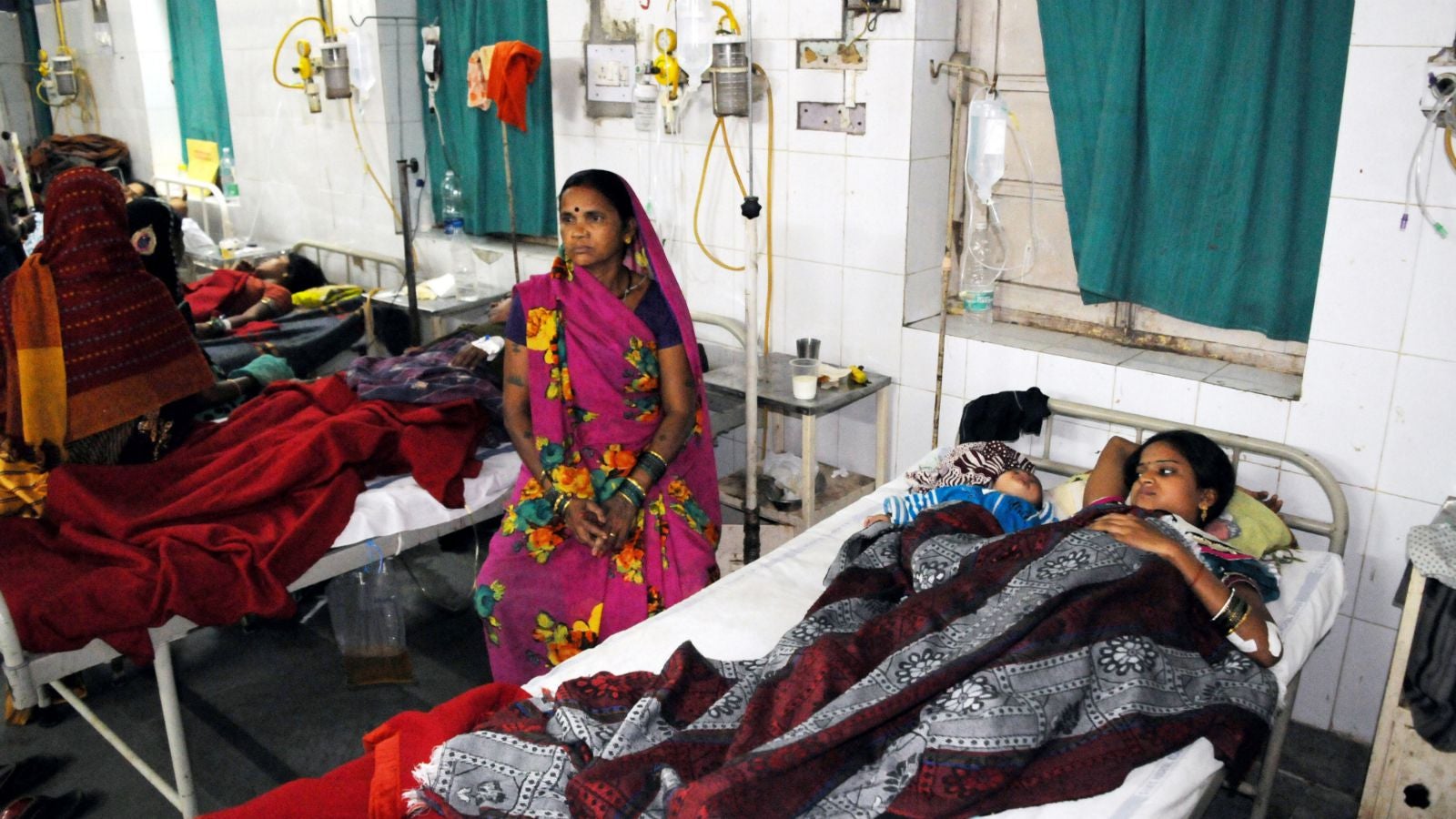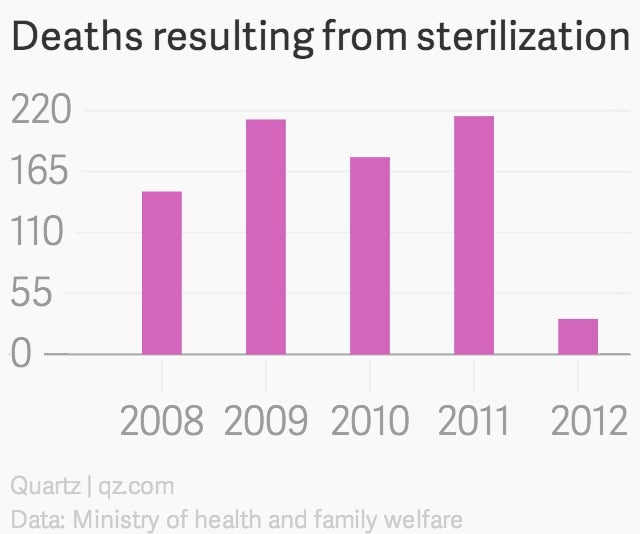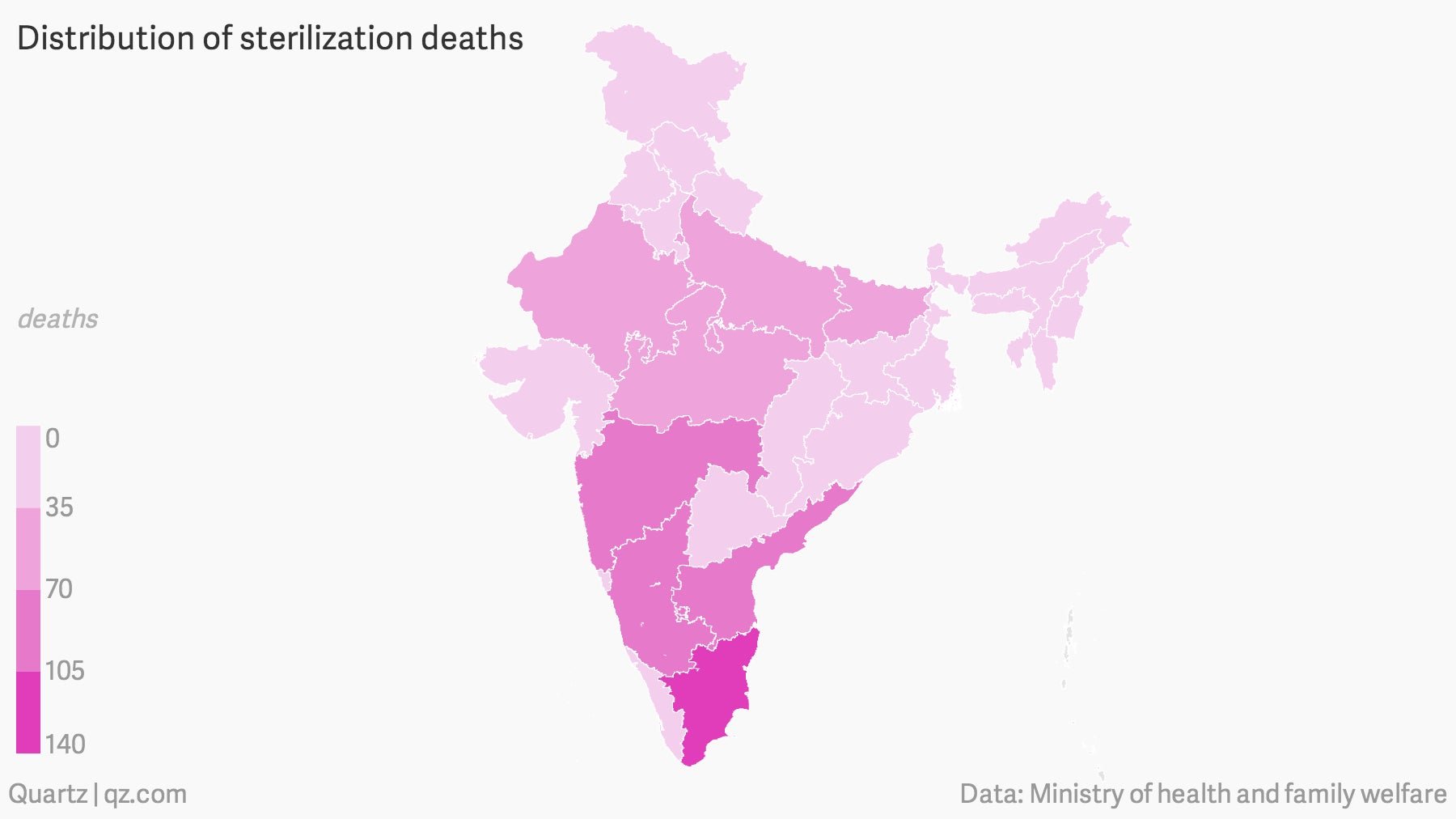This map captures the blood-soaked history of India’s sterilization programme
At least 11 women died and dozens more were hospitalized after a single surgeon performed 83 sterilization surgeries within six hours at a government-sponsored camp near Bilaspur in Chhattisgarh. That’s a little over four minutes for each patient, assuming the surgeon worked uninterrupted the entire time.


At least 11 women died and dozens more were hospitalized after a single surgeon performed 83 sterilization surgeries within six hours at a government-sponsored camp near Bilaspur in Chhattisgarh. That’s a little over four minutes for each patient, assuming the surgeon worked uninterrupted the entire time.
For India’s blood-soaked sterilization programme, that’s nothing new.

Since 2008, over 700 people have died after government-sponsored sterilization operations, according to India’s health ministry. And most of these are likely women, since only about 1% of Indian men undergo sterilization.
A large proportion of these deaths occurred in India’s southern states. Tamil Nadu, in particular, saw 135 deaths between 2008 and 2012, the worst such record in the country. Chhattisgarh, the state currently in focus, recorded 19 deaths during this period. And for some states, including those in the northeast, there was no data available.

While the Indian government officially stopped its target-based sterilization programme almost a decade ago—it was introduced in 1976 as a population control measure—Indian women continue to be coerced into undergoing these procedures, often lured by small amounts of money.
In a 2012 report, this is how Human Rights Watch described the situation:
In much of the country, authorities aggressively pursue targets, especially for female sterilization, by threatening health workers with salary cuts or dismissals. As a result, some health workers pressure women to undergo sterilization without providing sufficient information, either about possible complications, its irreversibility, or safer sex practices after the procedure.
The scale of the government’s programme can also be guessed by the large sums of money—more than Rs50 crore ($8 million) between 2010 and 2013—that it has spent on compensating victims of botched sterilization operations.
A number of these sterilization procedures go wrong because basic guidelines are not followed. The surgeon in Chhattisgarh, for instance, may have operated using rusty equipment or administered contaminated drugs.